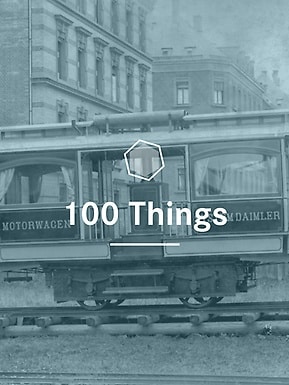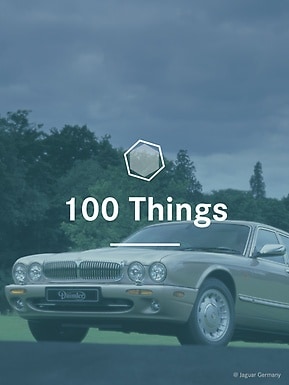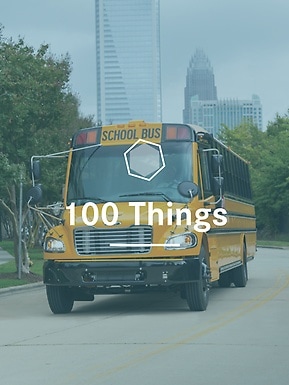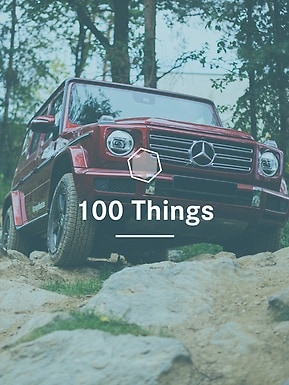The early 1920s were a dire time in Germany. The First World War had only just ended, and the Spanish Flu pandemic was slowly ebbing away. But any hope for a rapid recovery was dashed when the world’s largest economic crisis hit, causing massive inflation. Raw materials were in short supply – in such short supply, in fact, that the Daimler-Motoren-Gesellschaft production facilities in Berlin, which had been expanded during the war, were shut down. But necessity, as they say, is the mother of invention. The plant managers decided to “make beneficial use of the workshops and the means of production by incorporating new types of products,” as they put it in a 1923 press release. This marked the birth of Mercedes-Fahrradwerke GmbH – a bicycle factory – in Berlin-Marienfelde.
100 Things You Should Know About Mercedes-Benz | #19

The Mercedes of Bicycles.
Around 100 years ago, the Daimler-Motoren-Gesellschaft briefly stopped producing automobiles in Berlin due to a lack of materials and funds. So the engineers did what they do best: they got inventive!
3 min reading time


Model No. 1
Gottlieb Daimler had already equipped and patented his first motor bicycle with one of his internal combustion motors – the one known as the “grandfather clock” – in 1885. It was, in effect, the first motorcycle in the world. Now, his company was making a set of wheels without an engine, but it was bound to be a big seller, given the market at the time. After the war, Germany was in desperate need of affordable options for personal transportation. The plan was to manufacture motorcycles in Marienfelde at a later point, as well, but that never came to pass. After some initial personnel and material equipment-related delays, the first bicycle with the Mercedes star rolled out of the Marienfelde production hall in Berlin in February 1924. And all this happened in a 150-meter long, 19-meter-wide factory building, which had previously produced truckss. Among the prototypes was the Mercedes Model No. 1, a “sturdy touring bicycle,” as portrayed in its original description. It also says that the frame is made of “precisely drawn, seamless steel tubes of select and exceptional quality.” The bicycle had a classic diamond frame – not much has changed about this design in the last 100 years, which is why the Mercedes bicycles still look modern today.
Mercedes Model No. 2 had a bit more flair and was described as “the finest luxury touring bicycle.” It was an upgrade compared to No. 1, with a Torpedo freewheel hub from Fichtel & Sachs, whitewall tires, and steel rims varnished to look like wood. Six models were available when production launched, including the “fine half-racer road bike model No. 3”,” the “Fine Ladies’ Bicycle Mercedes No. 5,” and the “Finest Ladies’ Luxury Bicycle Mercedes No. 6.” Over the years, the range of bicycles grew to include a total of 13 models. The touring bicycles were painted pitch black as standard; other colors could be ordered for an additional fee. According to the catalog, the racing bicycles were available in red and green. Other extras included “Radsonne”-brand lights fueled with carbide, like old mining lamps. The gas generated by the reaction between calcium carbide and water created an extremely bright flame when burned.
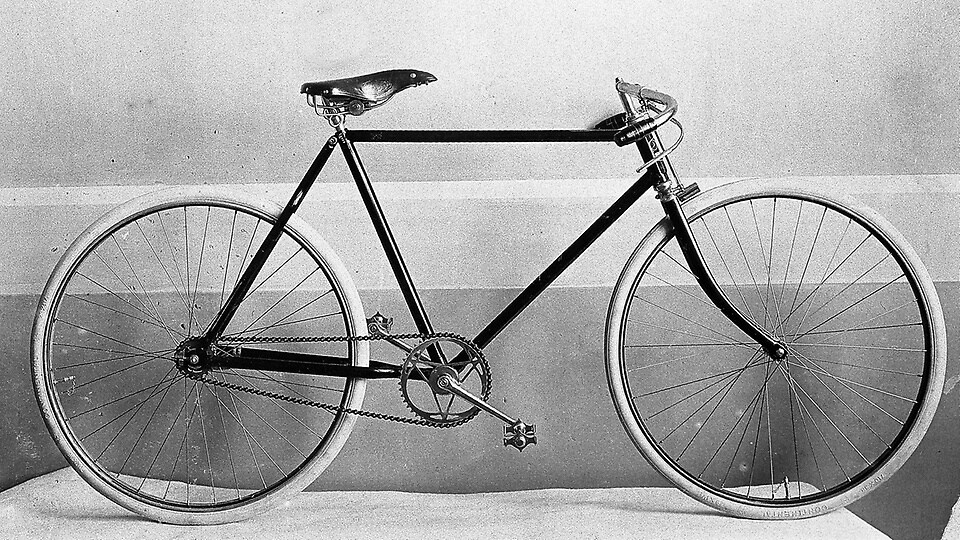




Unmistakably Mercedes
There was one thing all these bikes had in common: the Mercedes star. The Mercedes brand emblem appears in several places on these historical bicycles: on the pinion of the bottom bracket, stamped into the leather of the saddle and tool pouch, and twice on the brass plate of the distinctive triangular head tube. The shape was intended to be reminiscent of the pointed radiator grille on the Mercedes-Benz automobiles of the era. One additional benefit of the design was that the brake rod system did not cover up the two little Mercedes stars on the brass plate.
Yet the star of the Mercedes-Fahrradwerke GmbH shone for less time than the carbide lamp. Production was mothballed in 1926 after just under 27,000 bicycles had been produced, and Mercedes-Fahrradwerke GmbH Berlin-Marienfelde was removed from the commercial register on May 13, 1930. The company shifted production back to trucks. Compared to other German bicycle manufacturers, Mercedes produced a relatively small number of units – its market share was estimated at less than one percent. The price might have had something to do with that: as these noble bikes with the Mercedes star were “working machines of the highest quality” as stated in their brochure and, according to the dealer’s price lists, their ex-works price was between 78 and 147.50 goldmarks – without any special fittings such as the torpedo freewheel hub – over its whole production period. That was a hefty price for a bicycle and roughly equivalent to an average month’s salary at the time.
Sought-After Vintage Bikes
Around a century later, Mercedes bicycles are, unsurprisingly, a real rarity. Today the existence of only 40 such bicycles has been ascertained worldwide. And of course, demand among collectors is correspondingly high. Bicycles from Mercedes are among the world’s most expensive antique bikes. Consequently valuations for one such item are between 10,000 and 25,000 euros, depending on its state of preservation or restoration – if ever one of them came up for sale.







